
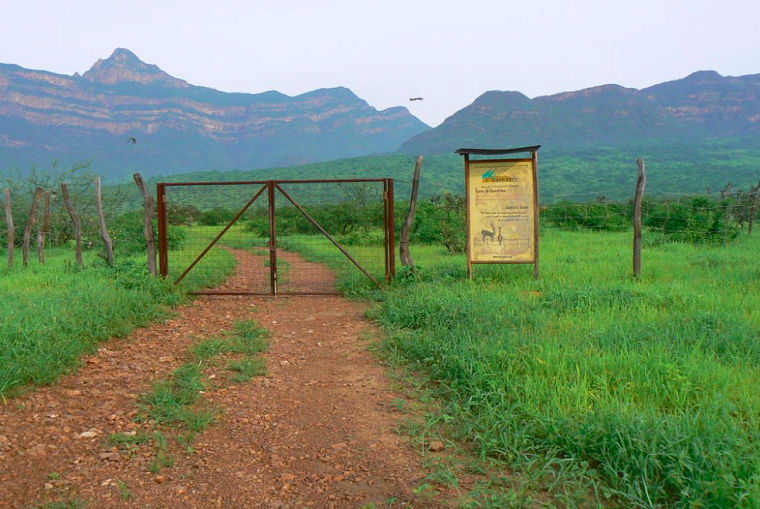
Named for the mountain that dominates the landscape, the Chaparrí Conservation Area is located about 50 miles east of the Pacific coast in northern Peru. This privately owned reserve encompasses 75,700 acres of tropical dry forests and was established by the local community of Santa Catalina de Chongoyape in 2000.
The reserve is in one of the most biologically diverse regions on the planet – the Tumbesian Dry Forests of northwest Peru and southwest Ecuador. Considered a worldwide conservation priority, this region is home to a great number of endemic species, including 60 threatened bird species, such as the white-winged guan and the Andean condor, and mammals such the spectacled bear and Sechuran fox. Distinct seasonal rains result in dense, green forests that change dramatically during the dry season, when most trees shed their leaves. The endemic species have adapted to survive the climate extremes of these unique forests, but their habitat is under tremendous threat.
Deforestation, timber exploitation, unsustainable agricultural practices such as overgrazing and overhunting, and the development of petroleum and mining operations present serious threats to the region’s biodiversity.
With only five percent of these forests remaining today, many of the threatened endemic species are in danger of extinction. This ecological crisis has gained global attention – numerous conservation organizations, including the World Wildlife Fund for Nature (WWF) and The Nature Conservancy, are focused on conserving and protecting the Tumbesian Dry Forests.
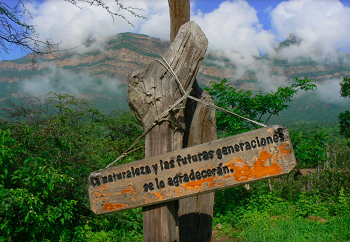
The First Private Conservation Area in Peru
I spoke with Luis Torres, a Peruvian who helped design the Chaparrí Conservation Area’s interpretive visitor center, or museo de sitio. He explained that a well-known, Peruvian wildlife photographer/conservationist named Heinz Plenge, spearheaded the establishment of the conservation area.
After decades photographing Peru’s wildlife and learning about conservation projects throughout the country, Plenge landed in Santa Catalina de Chongoyape with a vision. He saw the opportunity to protect and conserve the region’s rich biodiversity while working alongside the community members who know the landscape best.
Torres said establishing this conservation area was “absolutamente necesario” if the region’s species were to have any chance of surviving. He also admitted that the process didn’t happen overnight. It took several years for Plenge to convince the members of the community to convert the land into a conservation area, but eventually he was successful – and biodiversity benefits were quickly realized.
By establishing this reserve, the community protected their natural resources and sought sustainable alternatives to reduce poverty; job opportunities created at the reserve in turn improved the standard of living in the area.
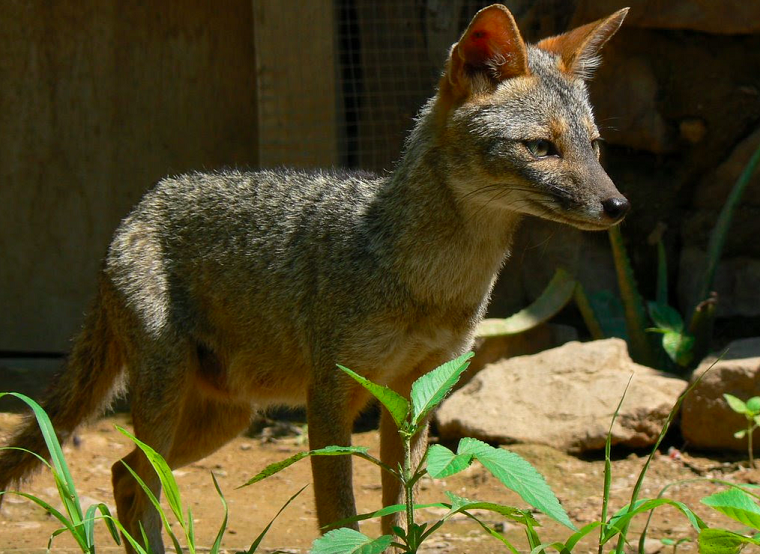
Because this privately owned conservation area was the first of its kind, establishing the reserve required legislative action from the Peruvian government. The community gained the support of local conservation development organization Asociacion Naymlap, which helped train people in jobs that support the reserve, such as park guards, ecotourism guides and positions that assist in species recovery programs. Torres explained that many of these positions were given to local hunters who had used the land before it became a reserve, lending their valuable experience of the region’s terrain and species.
The community encourages tourism to the reserve, as the entrance fees help fund key activities, and support local schools and health posts within the community. Additional projects are being implemented that support sustainable agriculture, including organic honey production and native cotton production.
Educating Visitors to the Reserve
Torres started working at the reserve in 2004 when the community enlisted his help in creating the reserve’s interpretive visitor center. The center exists to introduce guests to the types of flora and fauna they’ll see within the region and also to explain why the reserve was established — similar to the functions of visitor centers in U.S. national parks. Visitors learn about the 214 bird species, 21 mammals, and 20 reptiles and amphibians that the reserve supports, as well as the unique landscape of the Tumbesian Dry Forests. The center’s rustic, open-air design allows it to weather the elements and remain open 24 hours a day.
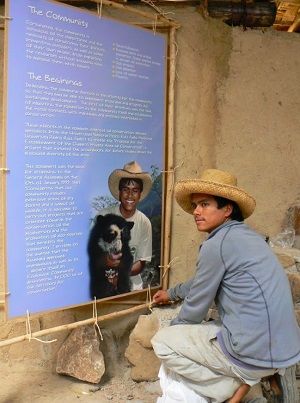
Visitors can explore the reserve on a network of trails that provide excellent wildlife and bird-watching opportunities. Chaparrí is also the site of Peru’s first wildlife rescue center designed specifically for spectacled bears. Seven bears that were confiscated from illegal captivity are currently housed in large semi-wild enclosures that provide the bears a stimulating natural environment in which to live. Under the supervision of one of the local guides, visitors can enter some of these enclosures and learn more about this threatened, endemic species. Chaparrí also helps other rescued species, such as the ocelot, Andean condor, king vulture and military macaw.
Conservation Success
The Chaparrí Conservation Area is a model of conservation success. Despite the community’s history of overhunting and overharvesting in the region, Torres told me, “Los animales regresaron” — the animals came back. The community’s commitment to restoring the land has resulted in rebounding endemic species and the re-nourishment of ecosystems.
The Tumbesian Dry Forests are a global conservation priority for good reasons — they’ve been severely threatened by human intervention and over 95 percent of their original surface has been lost as a result of development activities. The community of Santa Catalina de Chongoyape is protecting their own piece of this forest by maintaining the Chaparrí Conservation Area. Other locations in this region are creating reserves to protect the Tumbesian forests. The El Angolo and Talara Reserves together protect nearly 187,000 acres with the help of conservation organization Nature & Culture International.
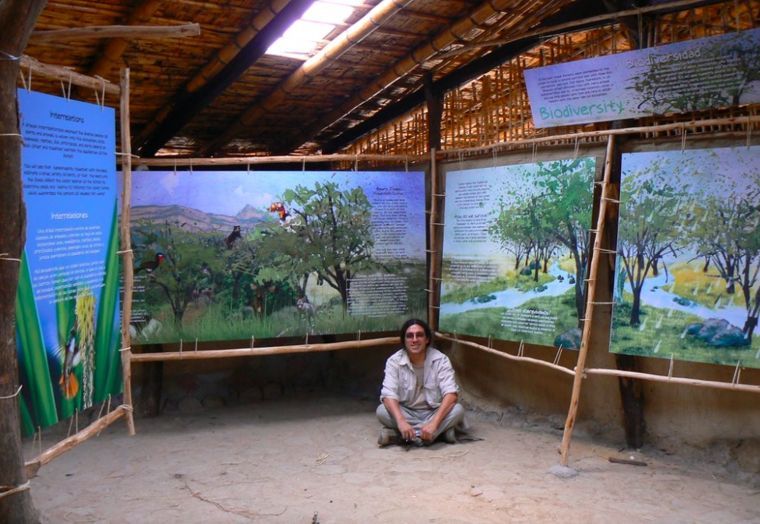
Luis Torres sitting inside his interpretive exhibit.
How to Visit
Visitors can spend multiple days exploring the reserve, which is a 90-minute drive from Chiclayo on the northern coast of Peru. Chiclayo has daily flights from Peru’s capital city of Lima. The route to Chongoyape is constructed of a fairly well-maintained road that passes through the towns of Pomalca, Tumán and Pátapo. The reserve’s staff recommends that you book your trip in advance. All visitors need to be accompanied by a guide when visiting the reserve.
Consider staying at the Chaparrí Eco Lodge, which offers accommodations in tranquil adobe bungalows with landscape views of the Andes foothills. It’s conveniently located near the reserve.
Photos are owned by Luis Torres, copyright protected, and may not be reproduced without permission.